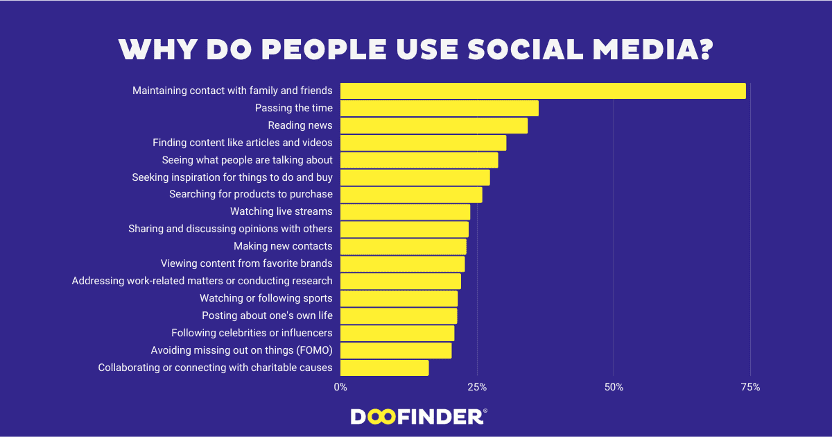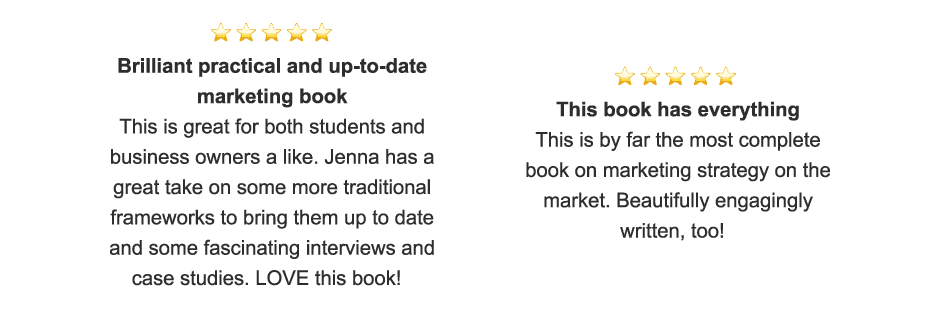There’s a lot to be said about marketing tactics. While they shouldn’t be confused with overall strategy, they’re still a very important aspect of any marketing campaign. You should choose your tactics carefully, and bring all your best resources to the table when executing them.
But first, you’ve got to decide which marketing channels you’ll be using to deploy your tactics.
Picking the right channels is incredibly important. The channels you use will have a big impact on what’s tactically possible, the audience you’ll impact, and how you execute your tactics.
Let’s look at various different marketing channels and how they can impact your tactics.
Digital marketing channels
You could be forgiven for thinking that the only channels worth focusing on these days are digital. And, to be fair, digital marketing is pretty cool. It’s shiny, exciting, has a ton of potential, and is evolving all the time. You can achieve an incredible amount with digital marketing.
That being said, it’s a mistake to focus solely on digital channels. You can still achieve things with traditional channels that aren’t possible with digital channels. Even better, you can sometimes combine the two to brilliant effect.
But we’re getting ahead of ourselves. Here’s a quick rundown of the top digital channels, and how you can use them to carry your tactics:
SEO
The purpose of SEO (Search Engine Optimisation) is to make sure that all your web content is optimised for maximum visibility to search engines. A good SEO strategy will work on making sure that your brand’s online presence is:
- Easy for search engine crawlers to find
- High quality (the perceived quality of content has a huge impact on search engine rankings)
- High relevance for consumers
- Good engagement rates
Keywords are a big part of SEO. Peppering your content with particular keywords will help search engines to favour your content when people search for those keywords. But be careful – search engines are sophisticated enough to know when you’re ‘keyword stuffing’.
Ultimately, it’s high-quality content that will get you the best SEO results. When you do use keywords for SEO, make sure that they’re used naturally and are relevant to the topic at hand.
PPC
PPC (Pay-Per-Click) is basically a search-engine specific ad channel. You know those ads that appear alongside your Google search results? They’re PPC ads.
For example, a search for ‘dog food’ will throw up a range of ‘Sponsored’ results followed by the organic search results. These ‘sponsored’ results are PPC. The advertiser will pay Google for each click that their ad receives. In return, Google promises to display their advert beneath relevant searches.

In order to give search engines a fighting chance of partnering your PPC ads with the right searches, pay particular attention to:
- The keywords your ad uses
- The location you’re targeting
- The content that is displayed after the click, known as the landing page. This is the page that the visitor from the ad lands on after clicking it.
Clever use and consideration of these factors can help to manoeuvre your advert into pole position.
Social media
Social media marketing is a huge topic in its own right. There are many social media channels, all with their own different formats, audiences, strengths, and weaknesses. TikTok will need different tactics to Facebook, and Snapchat is different again.
Social media platforms offer access to enormous audiences. They’re also versatile. You can be very inventive with social media marketing, and push your inventive creatives in front of hundreds of thousands of eyes for relatively low cost.
The flipside of this is that you’ll have to work very hard to get the attention of all those hundreds of thousands of people. Social media users tend to log on for the ‘social’ part of social media, and have learned to filter out the many, many brands competing for their attention.

So, to make an impact on social media, you will need to have a strong strategy focused around relevant, engaging, and attention-grabbing content.
Email marketing is one of the most consistently successful marketing channels of all time. Email gives marketers a direct line to individual customers, making it perfect for lead-nurturing, re-engagement, and general relationship building.
You can also send out a huge variety of content types and formats in an email, making it one of the most versatile channels around. A good email marketing platform will give you in-depth analytics on every email campaign and allow you to segment and target your email list to a granular level.
All in all, it’s well worth building email into your marketing strategy and putting your best efforts into email marketing tactics. Any effort you give email is likely to pay massive returns.
Website/e-commerce
Your website is like your digital shopfront. It’s often the first place that prospective customers will head. If they like what they see, congratulations! You’ve acquired yourself some hot leads. But if they don’t, they’re unlikely to come back.
If you’re in eCommerce, your website is doubly important. Your website isn’t just your ‘digital shopfront’. It’s your actual shop. You need to make sure that it’s easy for people to find what they need in your eCommerce store. Once they’ve found it, a smooth and intuitive checkout and delivery experience will work wonders.
Good website marketing tactics will aim to convert visitors into qualified leads, and usher good leads through to conversion.
Traditional (offline) channels
Traditional marketing channels still have a lot going for them. Things like billboards and physical product demos have a substance to them that’s hard to replicate digitally. What’s more, it’s a lot harder for people to ‘filter out’ or ignore traditional marketing channels the way they do online.
Depending on the audience you are targeting, traditional marketing can have massive potential and bring in some fantastic leads if you use the right channels and tactics.
Trade shows and exhibitions
Trade shows and exhibitions (also known as ‘Expos’) are a great way to build up brand recognition and expand your network. They’re more common in B2B industries, but there are sometimes opportunities to exhibit B2C, depending on your product.
The great thing about marketing your product in person is that people can interact with your physical product (or, if you’re a service, chat face-to-face with the people providing your service). If you want to convince people of the quality and usefulness of your product, there’s no quicker way than letting them physically handle and demo it.
Direct mail
Ah, the good old post. ‘Snail mail’ may seem old fashioned, but especially for older audience demographics, it can still be one of the best ways to get your customers’ attention.
For example, many cosmetics companies use the post to send out free samples of their product. If your product can be squished down into a postable sample size, using the post to give our free samples is a great way to quickly generate a lot of highly qualified leads.
Even if you can’t send out samples, direct mail still has a lot of potential. In Jenna’s book, ‘Marketing Strategy’, she talks about how brands use AR and VR to combine the physicality of direct mail with the digital potential of tech.
Radio
Video didn’t kill the radio star. It just put the radio star into a coma for a few decades. Now, radio is back in a big way – and it’s even threatening to take vengeance on the video star.
Podcasts are one of the most popular forms of content in existence. We’ve never met someone who doesn’t like to pop on a podcast while walking, driving, doing the washing up etc – and there are hundreds of thousands of podcasts out there to choose from. If you can get your product an ad slot on a popular podcast, you can guarantee a large and attentive audience.
Tempted? You should be! Pound for pound, radio advertising gives much greater ROI than video advertising, and can be more intensively targeted based on listener demographics.
Television
Television advertising is in kind of a strange place right now. For a long time, it was struggling due to the proliferation of streaming services. People are willing to pay through the nose for an uninterrupted, ad-free stream.
But that looks set to change. Platforms like Amazon and even Netflix have reintroduced limited adverts on their streams. While it’s not been very popular with viewers, the move has piqued the interest of powerful advertisers. It’s definitely worth keeping an eye on this channel in the near future.
Book recommendations
We’ve only covered a few of the most prominent marketing channels here. For a full exploration of the best marketing channels, where they’ve come from, where they’re going, and more, grab a copy of Jenna’s book, ‘Marketing Strategy: Overcome Common Pitfalls and Create Effective Marketing’.
Not only does the ‘Tactics’ chapter go into way more detail about marketing channels and their uses than we’ve covered here, it also features an exclusive interview with the brilliant Victoria Peppiatt, COO and co-founder of Phrasee (now Jacqard).
Exclusive offer, 20% off!


